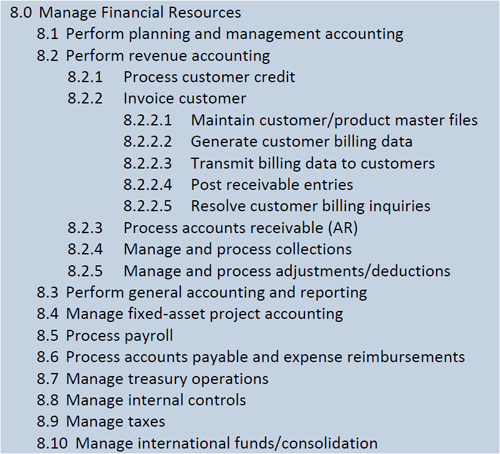ONLINE EXCLUSIVE: Benchmarking: That Sounds Complex and Difficult
Ron Webb and Bill Baker
“We’re a small organization. We can’t undertake a major initiative like benchmarking.” We hear this statement in many forms all of the time. Benchmarking does require thought, focus, coordination, and some effort, but it doesn’t have to be a major drain of your time or bandwidth. Like most things, you will get out what you put in. Here are some tips and tricks of the trade on how to effectively benchmark your organizational processes.
Focus and Align
Make sure your efforts are focused and aligned with the strategic objectives of your organization. This approach keeps you focused on improving the right things. You can do it by following these six steps, requiring one to two hours’ time from one to three people:
- Identify your customers.
- Define your organization’s key business objectives and desired outcomes.
- Determine your critical success factors (the variables that most directly influence the achievement of your business objectives and desired outcomes).
- Ascertain which core business processes affect these critical success factors.
- Verify which processes have the greatest impact on accomplishing your business objectives and need improvement.
- Decide which types of benchmarking activities would help improve the high-priority, poor-performing business processes.
Know Your Processes
Before you ask someone else to tell you how his or her key processes work, know exactly how yours work. You should map or document the key processes and corresponding work duties or activities that you plan to benchmark. You’ll find that there are many “aha” moments that come out of this exercise. You’ll start improving even before you benchmark with another organization. The time commitment for this activity will be three to four hours from the team or department charged with executing the process.
Have a Common Language
Once you’ve mapped and/or documented your process, use this information when talking with the organizations you want to benchmark with, your peer group. We found that labels and names cause a lot of problems when benchmarking. One organization’s procurement is another organization’s purchasing.
Take this out of the equation by using your process map, or put your processes and activities in a format that explains the activities you want to include in the scope of your benchmarking effort. APQC developed our Process Classification Framework for this specific reason. As you can see in Figure 1, you can call it “invoicing,” “revenue accounting,” or “the accounting office down the hall,” but we call it “8.2 Perform revenue accounting” and all the subsequent activities listed in the graphic. It’s clear, concise, and everyone knows exactly what is included in the scope.

Figure 1.
Know the Rules of the Game
Equally important as knowing your own processes and being able to explain them clearly is the need to know the acceptable behaviors during a benchmarking project. APQC developed another tool that is a must before you start contacting and talking to any outside organizations. This Benchmarking Code of Conduct is used by organizations around the world to govern their benchmarking efforts. Share this information as you talk to peers you’d like to include in your benchmarking effort. It was developed with lawyers involved; make sure your legal team reviews it, too.
Be Creative About Your Benchmarking Peer Group
Everyone wants to talk to their competitors. We get it! It’s probably not going to happen, however. This is where you get to be creative. We suggest you look at the process you are benchmarking, set some basic criteria about the process, and look for organizations that might have a similar process.
You make a widget? Having issues with production because you’ve grown from producing 1,000 widgets per day to 10,000 widgets per day? Lucky you; great problem to have! Now, go talk to any widget maker in the area producing 10,000 widgets per day and ask them how they get it done. Tour the company's location. See if it went through a similar challenge. Start the dialog, and you’ll get some breakthrough learning. Best of all, you just benchmarked.
You will learn a lot more from an organization with a process with an output equal to or better than yours than you will from an industry peer. You aren’t worrying about how the discussion has to be tempered because you are industry peers and competitors. It is open, honest, and direct.
Did you meet an industry peer at a trade show who is willing to talk with you, but the company is located 3,000 miles away? Site tours are great, but pick up the phone. Use a web-based meeting software. You will gain plenty of information by using these distance learning options. APQC conducts dozens of benchmarking projects every year involving hundreds of companies. Most of the benchmarking meetings are held virtually. Time and travel budgets may be limited, but we still need the information to improve.
Get Started
The Boy Scouts have it right; always be prepared. Taking the first step is even more important. Have a conversation at a trade show. Have a phone discussion with someone you found on LinkedIn from a company you respect. Are you a part of an informal benchmarking group like the AME/APQC Benchmarking Community of Practice (CoP)? Use the tips provided in this article to ensure a focused, efficient, effective, and fair benchmarking exercise. Start now! Your business will be better for it.
Ron Webb is the executive director of membership and research at APQC. Bill Baker is the Association for Manufacturing Excellence (AME) vice president for alliances. This article is the third part in a series of four articles about benchmarking.


